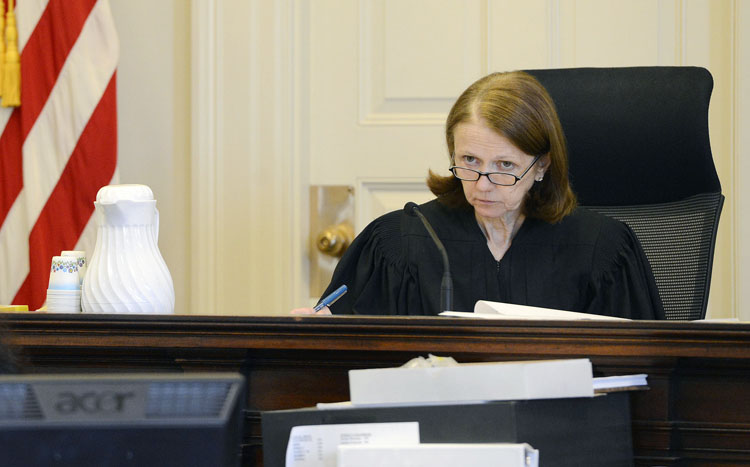ALFRED – The sexually explicit video that jurors in the Kennebunk prostitution trial were shown Thursday was the latest example of how unusual and sometimes confusing the closely watched trial has been, said several attorneys who aren’t involved in the case.
While trials for prostitution are rare in Maine, prosecutorial strategies that involve so many graphic videos and photos are even rarer, said Sumner Lipman, an attorney in Augusta.
“Its obviously being done to prejudice the jury, but as trial lawyers, we always want to prejudice a jury on our client’s behalf,” Lipman said. “The question becomes, what is unduly prejudicial?”
Another lawyer interpreted the showing of the roughly 45-minute video differently, saying it was necessary to make the case.
Jim Burke, clinical professor at the University of Maine School of Law, said evidence in a case should relate to the allegations, which in this instance almost exclusively involve sex.
“If the question was, did (Alexis Wright) have a license to put the (Zumba studio’s) sign out front, none of this would be relevant,” Burke said.
Mark Strong Sr. of Thomaston, who is on trial, is accused of conspiring with Wright to promote a one-woman prostitution business from her Zumba studio in Kennebunk.
In the video shown in court Thursday, a man dropped a heap of cash on a table after he and Wright had sex.
Prosecutors say there are more than 150 videos like the one shown Thursday, and nearly 14,000 photographs that show Wright engaging in sex.
The person who will decide what the jurors see is Justice Nancy Mills.
“Justice Mills is not brand new on the bench,” said Ellsworth Rundlett, a Portland attorney and a former president of the Maine Trial Lawyer’s Association. “She has the type of discretion to say that this video was indeed necessary.”
Rundlett said prosecutors made it clear to the judge that they are showing videos so they can connect the evidence to Strong.
Daniel Lilley, Strong’s attorney, has objected passionately, arguing that the 100 images admitted as evidence and less than a dozen videos are more than enough for the prosecution to prove its case.
Burke compared the content of the evidence to a series of legal challenges in the 1980s to a Portland ordinance barring sales of materials deemed obscene.
Each time a case was brought before the Maine Supreme Judicial Court, the types of sexually explicit materials that the city sought to ban were entered into evidence and shown to the court, Burke said.
Similar issues can arise in the prosecution of cases involving child pornography. While merely possessing such material is a felony, Burke said, “you have to put it into evidence.”
For evidence to be admitted, it must be relevant, but not all relevant evidence is admissible, he said.
Evidence in a trial is by nature meant to sway jurors. The question for a judge is whether it’s unfairly prejudicial, Burke said.
“Whoever finds it offensive or prejudicial or icky, that’s not a legal question,” he said.
Matt Byrne can be contacted at 791-6303 or at:
mbyrne@pressherald.com
Send questions/comments to the editors.




Success. Please wait for the page to reload. If the page does not reload within 5 seconds, please refresh the page.
Enter your email and password to access comments.
Hi, to comment on stories you must . This profile is in addition to your subscription and website login.
Already have a commenting profile? .
Invalid username/password.
Please check your email to confirm and complete your registration.
Only subscribers are eligible to post comments. Please subscribe or login first for digital access. Here’s why.
Use the form below to reset your password. When you've submitted your account email, we will send an email with a reset code.